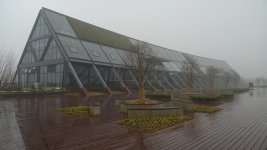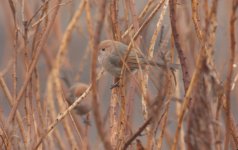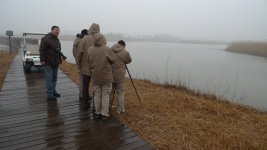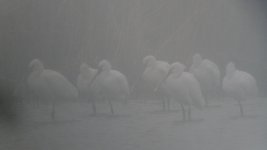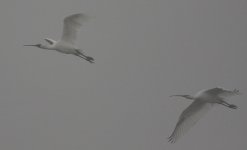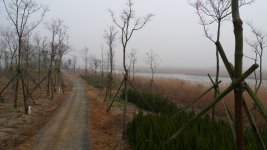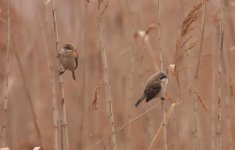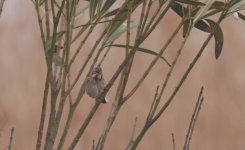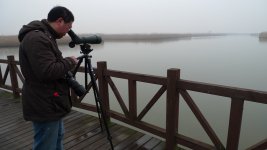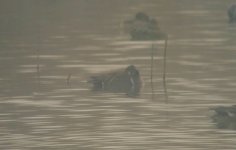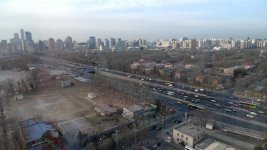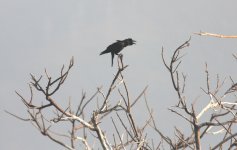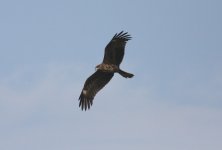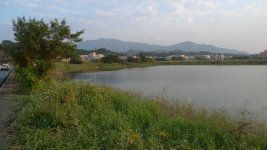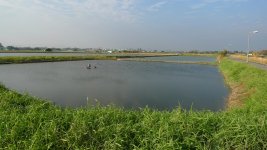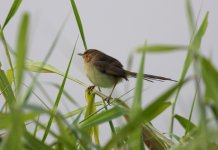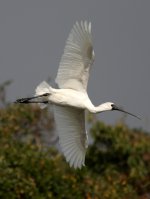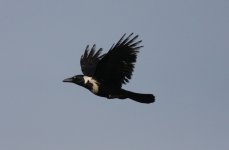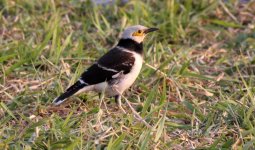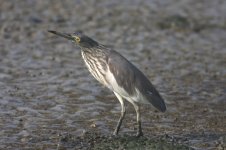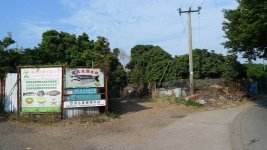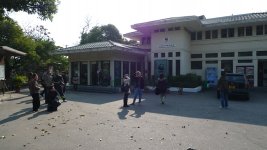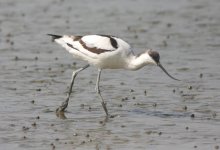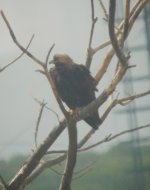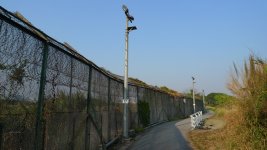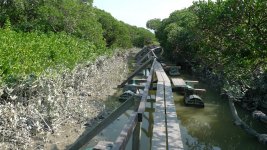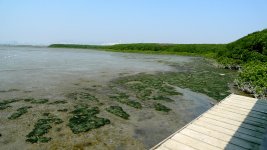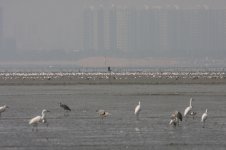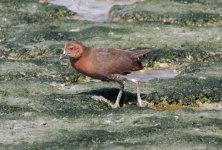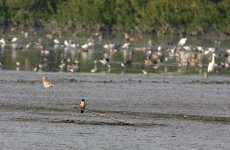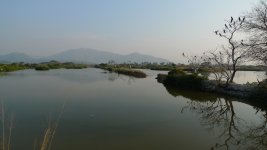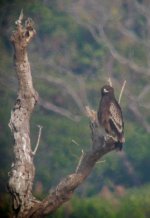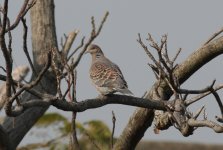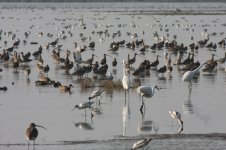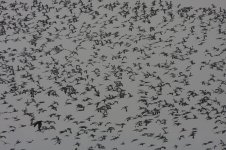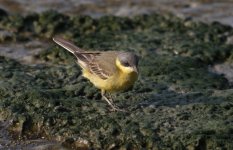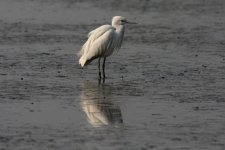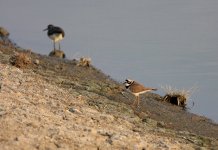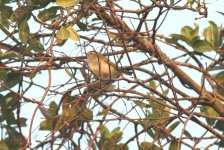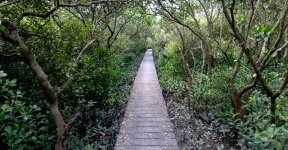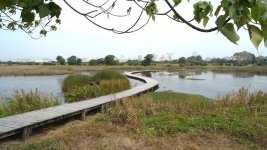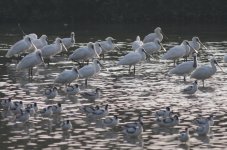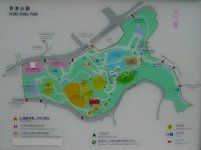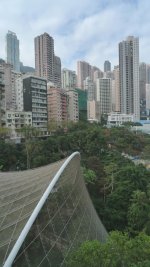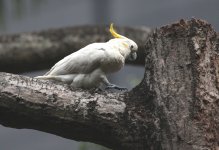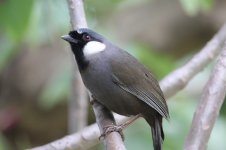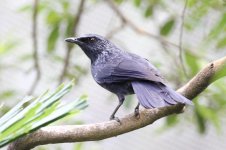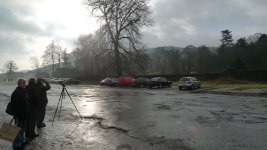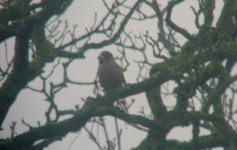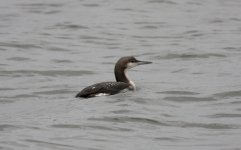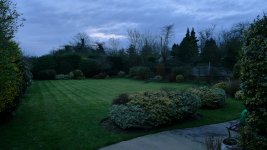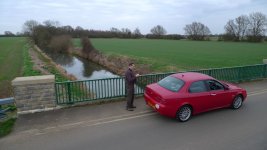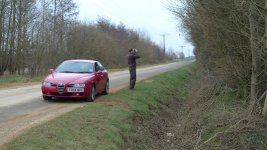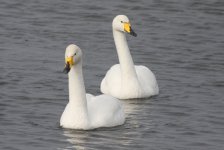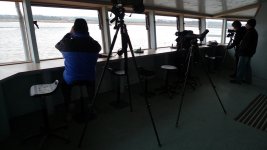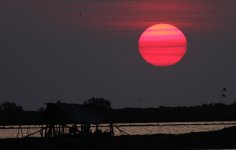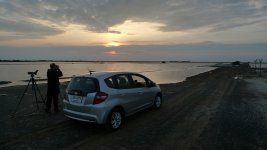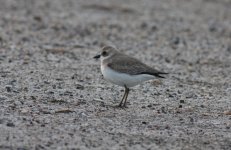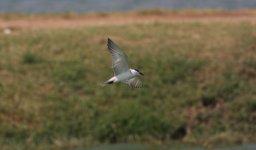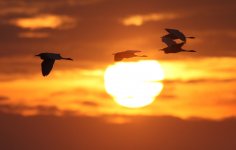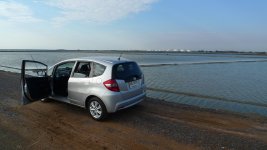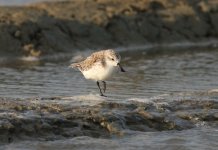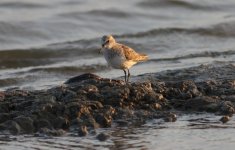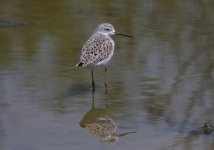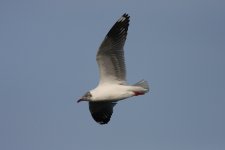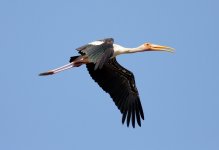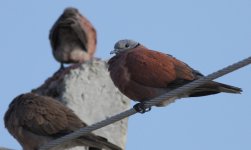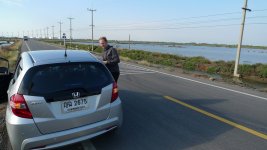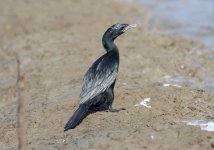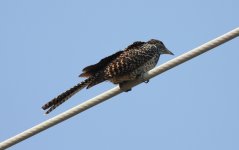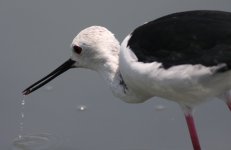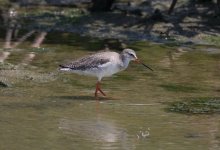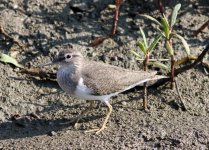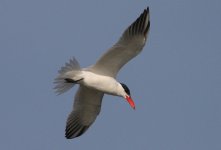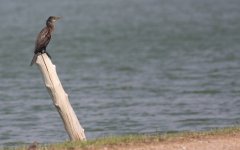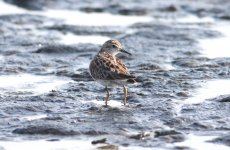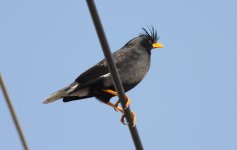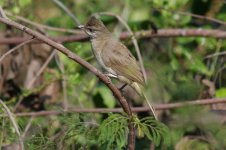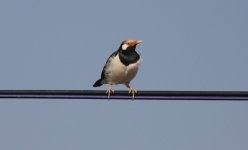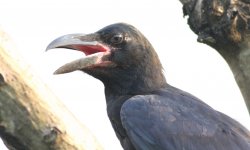ChinaBirds
Nick Sismey
23 January 2011 (Continued)
Already satisfied with the day we returned to our car, thanked the official very much for his time and stopped in the village for lunch. The restaurant kept a Crested Myna and a Sparrowhawk in separate cages just outside the window, not something I like to see. At least they had the present of mind not to put them in the same cage!
Rejuvenated, we then headed for the Dongtan Wetland Park (Photo1) where 80 Yuan (£8) each gave Cai and I (Yan was feeling off colour so stayed in the car) entry to the park, which was full of large fresh water lagoons surrounded by reed beds. Many more Vinous Throated Parrotbills (Photo 2) here.
One of the target species was Baikal Teal, which I hadn’t seen for a couple of years, in Sichuan province. We therefore set off to where we knew the large flocks of ducks would be. On a whim I suggested to Cai that we should take a detour along a boardwalk I wish I had negotiated the last time we were here. It gave great views of one of the lagoons (Photo 3) and in the far corner a flock of Spoonbills (Photo 4) were sleeping off their lunch.
183.Spoonbill-------------------Dongtan Wetland Park-----------China
Several rangers from the park joined us in a golf trolley asking whether any were Black Faced Spoonbills. We checked several times, with the scope, but with many with their heads deep under their wings we couldn’t be sure.
We did however pick up one black face, a Black Faced Bunting was resting on a broken bulrush stem. Amongst the ducks were several Falcated Ducks that always remind me of pretentious Mallard, which were also in plentiful supply.
184.Black Faced Bunting-------Dongtan Wetland Park-----------China
185.Falcated Duck-------------Dongtan Wetland Park------------China
Pintail, Goosander, Little Grebe and Coot all added to the China year list. As the boardwalk rounded the end of the lagoon near the Spoonbill they took to the air. A few quick shots confirmed that there were indeed Black Faced Spoonbills (Photo 5) amongst the flock.
186.Black Faced Spoonbill------Dongtan Wetland Park-----------China
More to follow…..
Already satisfied with the day we returned to our car, thanked the official very much for his time and stopped in the village for lunch. The restaurant kept a Crested Myna and a Sparrowhawk in separate cages just outside the window, not something I like to see. At least they had the present of mind not to put them in the same cage!
Rejuvenated, we then headed for the Dongtan Wetland Park (Photo1) where 80 Yuan (£8) each gave Cai and I (Yan was feeling off colour so stayed in the car) entry to the park, which was full of large fresh water lagoons surrounded by reed beds. Many more Vinous Throated Parrotbills (Photo 2) here.
One of the target species was Baikal Teal, which I hadn’t seen for a couple of years, in Sichuan province. We therefore set off to where we knew the large flocks of ducks would be. On a whim I suggested to Cai that we should take a detour along a boardwalk I wish I had negotiated the last time we were here. It gave great views of one of the lagoons (Photo 3) and in the far corner a flock of Spoonbills (Photo 4) were sleeping off their lunch.
183.Spoonbill-------------------Dongtan Wetland Park-----------China
Several rangers from the park joined us in a golf trolley asking whether any were Black Faced Spoonbills. We checked several times, with the scope, but with many with their heads deep under their wings we couldn’t be sure.
We did however pick up one black face, a Black Faced Bunting was resting on a broken bulrush stem. Amongst the ducks were several Falcated Ducks that always remind me of pretentious Mallard, which were also in plentiful supply.
184.Black Faced Bunting-------Dongtan Wetland Park-----------China
185.Falcated Duck-------------Dongtan Wetland Park------------China
Pintail, Goosander, Little Grebe and Coot all added to the China year list. As the boardwalk rounded the end of the lagoon near the Spoonbill they took to the air. A few quick shots confirmed that there were indeed Black Faced Spoonbills (Photo 5) amongst the flock.
186.Black Faced Spoonbill------Dongtan Wetland Park-----------China
More to follow…..
Attachments
Last edited:




